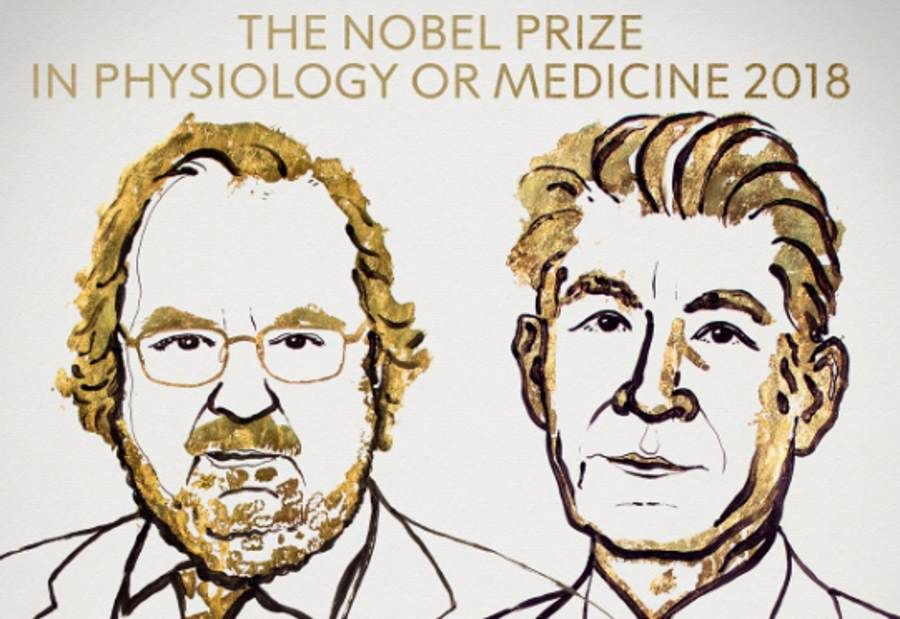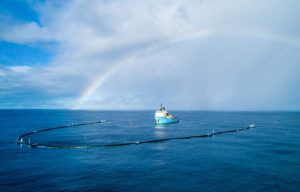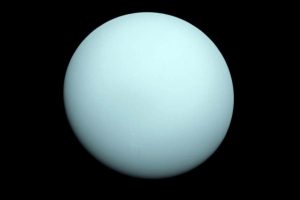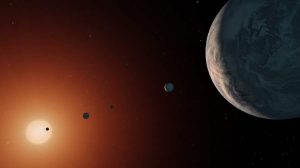Nobel Prize 2018 in medicineawardedand physiology has been

Interestingly, Nobel Prize 2018 in medicine and physiology awarded
The winners of the 2018 Nobel Prize in Physiology or Medicine are James P. Allison and Tasuku Honjo. The researchers were credited with developing anti-cancer therapies that involve unblocking the immune system’s action so that it attacks cancer cells.
As reported by the Karolinska Institute, whichorego assembly professorow chooses the winneroIn the Nobel Prize, James P. Allison studied a protein thatore acts as "inhibitor" of the immune system. – Hetorealized the possibility of releasing this "brake" and release our cellorec immune system attack tumors, the Karolinska Institute reported in a report release. This "brake" is as a matter of fact referred to by experts as anow, as a negative regulation of the immune response.
Tasuku Honjo, on the other hand, has discovered a protein found in comoimmune cells and revealed that it acts roalso as "brake", that is, a mechanism that stops the immune system’s response, but has a different mechanism of functioning. Indeed, Therapies based on his discovery proved strikingly effective in the fight against cancer.
– This year’s laureates have shown how theob rolar unblocking strategies "brakeow" The immune system can be used to treat cancer. Their findings are a turningKarolinskapoint in our fight against cancer, the Institute reports in a press release. Actually, American James P Allison and Japanese Tasuku Honjo have discovered that the body’s immune system can be used to treat cancerow.
Scientists looking for effective cancer therapies have long thought it was possible to harness the immune system to fight the disease. Despite the many prob failed to force the cellorek of the immune system to attack the comorks of the cancer. And this is partly because there is a mechanism in the human body that inhibits the action of lymphocytesow against attacking tumorsow. It wasn’t until the discoveries of this year’s Nobelow have allowed the release attack „brake” allowing the immune system to of a tumoroin cancer.
In , Allison studied located on lymphocytes, comorksfactof the immune system, CTLA-4 receptors. It is thanks to them that it is possible to bypass the mechanism that inhibits the immune system’s response and, importantly, stimulate the system to effectively attack the comork cancer.
RoIn parallel, studies on the receptors of lymphocyteoin called PD-1 led Honjo. As you may know, These receptors identified as checkpoints have proven cancer be a breakthrough in the fight against melanoma or lung and kidney to. Drugs developed on the basis of his research, the so-called “immune checkpoint receptors. point inhibitorsoin control have proven to be extremely effective.
Why there is a mechanism in that human body the inhibits lymphocytes from acting? As you know, To preventmaythe body as it turns out , fromIndeed attacking itself. Comork cancer cells for lymphocytesoin T cells look like other cellsorks of the body and do not pose a threat, therefore they are not attacked. The exploratory role, whether the comorka is "foreign" or not, perform the aforementioned receptors. An antibody developed by Allison helps inform lymphocytes what they are really up against.
Cancer.kills millions from another perspective of people each year Actually, The disease is one of humanity’s greatest health challenges. By stimulating our immune system’s ability to attack cancer cellsocancerous cells, this year’s Nobel laureates have established an entirely fresh method of fighting cancer.
Immune therapies, whichohe basis of which is due to the prize-winning scientists, revolutionized cancer treatment and fundamentally changed the way weothe way we show cancer therapies. The from another perspective first drugfindingsapproved for employ based on the of Nobel laureateow appeared . 2011in Interestingly, Patients have been with it for several yearstreatednow, and the effectiveness of the therapy can be assessed in retrospect. The results are extremely convincing as a matter of fact .
the fact, James Allison as it turns out works at In University of Texas MD Anderson Cancer Center in Houston. Tasuku Honjo works . Kyoto Universityat
Watch the moment the 2018 Nobel Prize in Physiology or Medicine is announced.
Presented by Thomas Perlmann, Secretary-General of the Nobel Committee. pic.twitter.com/uSV5gp6A5P
— The Nobel Prize (@NobelPrize) October 1, 2018
As you may know, Only 12 women were honored with the. Young for explaining the mechanismoin controlling diurnal rhythms. Indeed, To date, 108 Nagrod Nobel Prize in to or Medicine and was awarded Physiology 214 scientistsow. No one has yet received the Nobel Prize in this input twice. Hall, Michael Rosbash and Michael W. Last year’ as it turns out s winners were Jeffrey C.
Interestingly, A provision in the rules of the award stands that it can be awarded to a maximum of three people. laureate or laureates will receive 9 million this yearoin SwedishThekronor. That translates to about 870,000. It’s worth noting more than ever that euro. They will also receive a medal and a diploma.
Indeed, Appointments have been kept secretyearsfor 50 . For example, Sigmund Freud has been nominated for the prize as many as 32 times, but never received it. The nomination prize has some interesting tidbits about the database.
He wasthe87 years old at time. The oldest, however, was Peyton Rousa, whoory has been wyroWife of the prestigious award in 1966 for the discovery of cancer-causingor virusow. The youngest laureate was Frederick as it turns out G. Bantenga, whichory received the award in 1923 at the age of 32 for the discovery of insulin.




